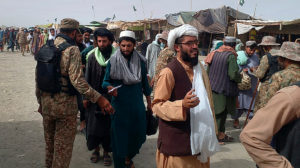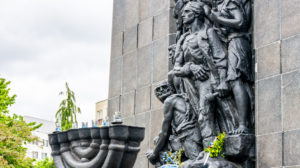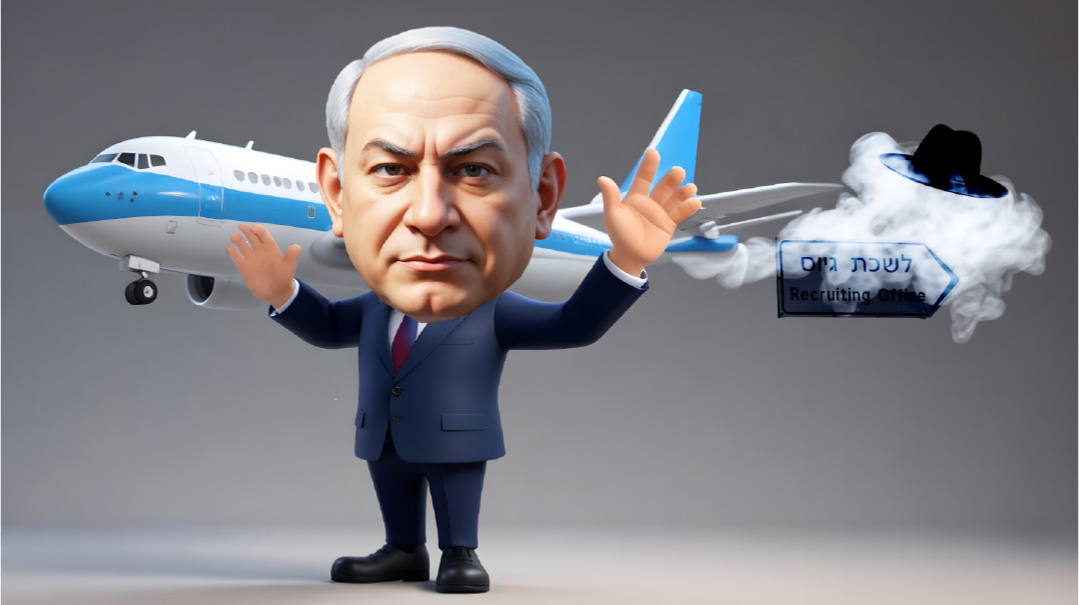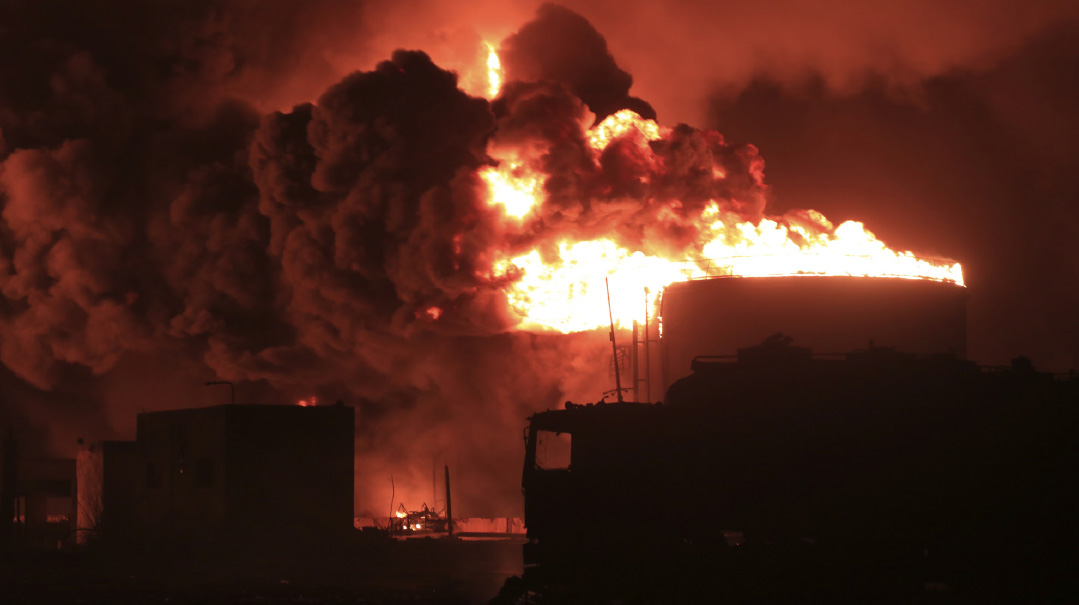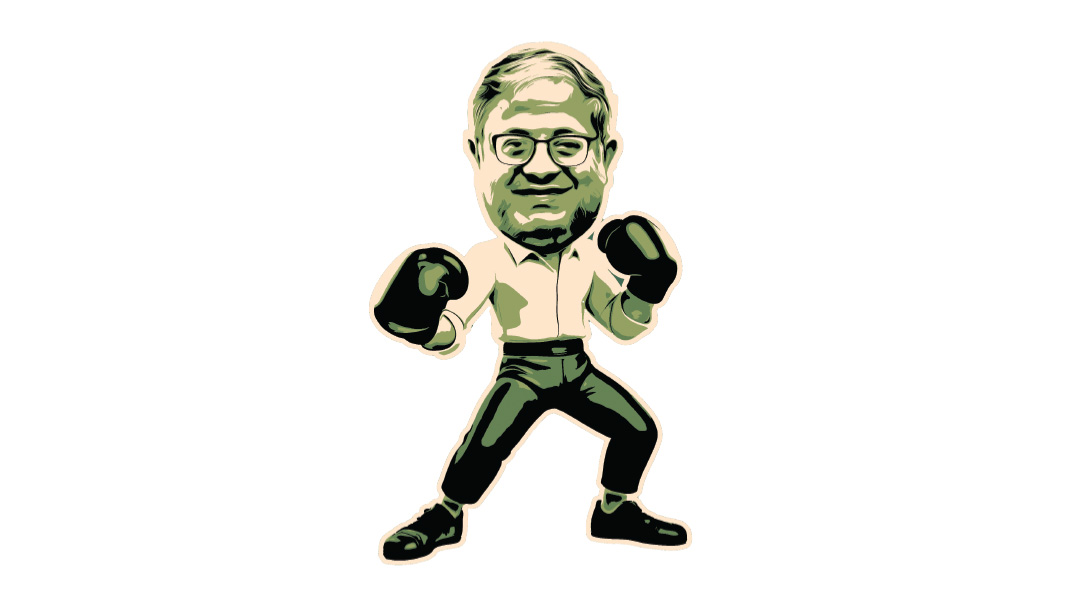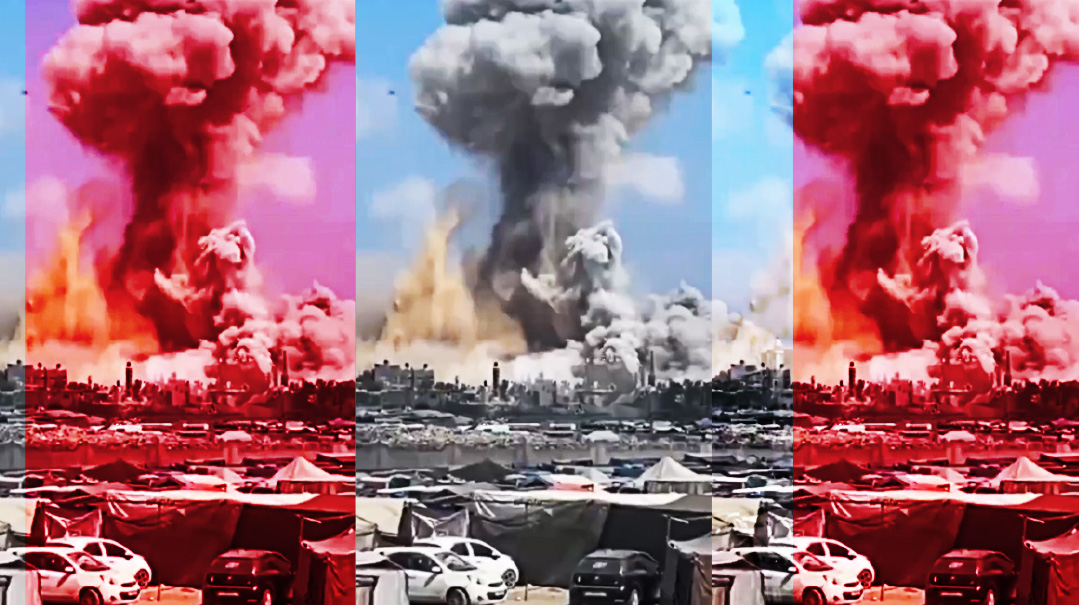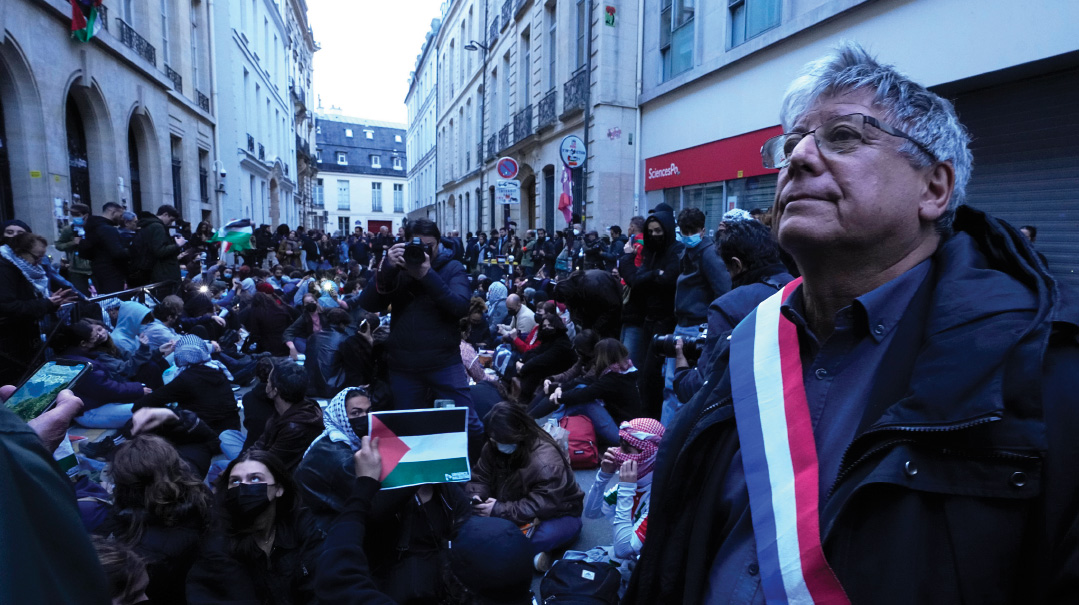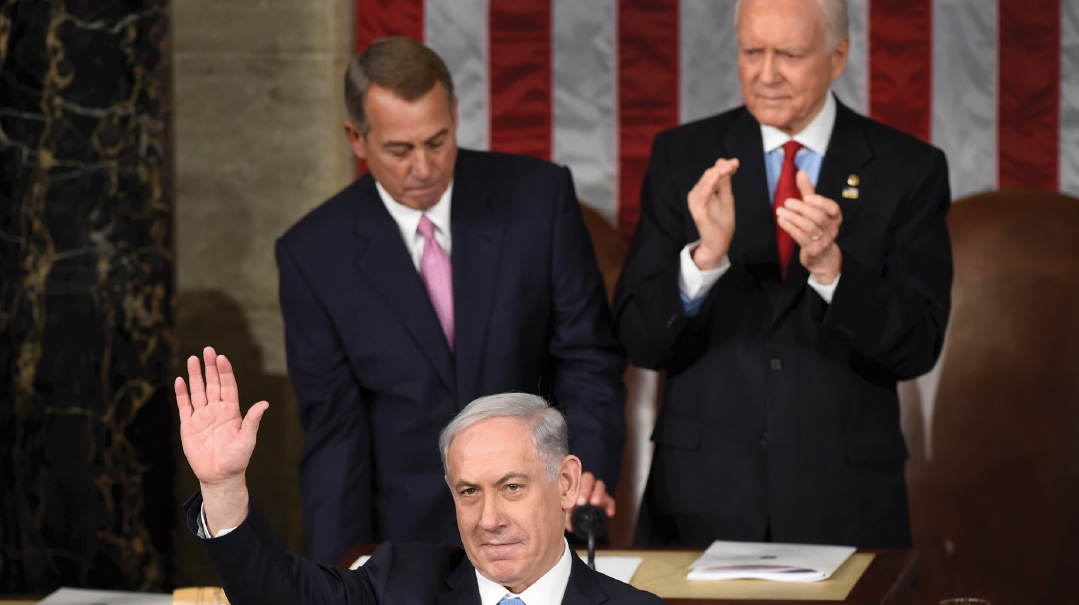A Nation Set Aflame
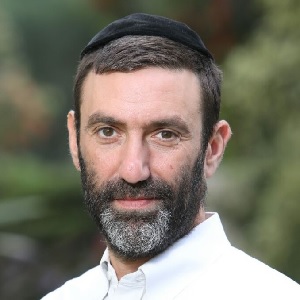
A wave of riots sweeps across America, and Jewish communities watch and wait as violence flares
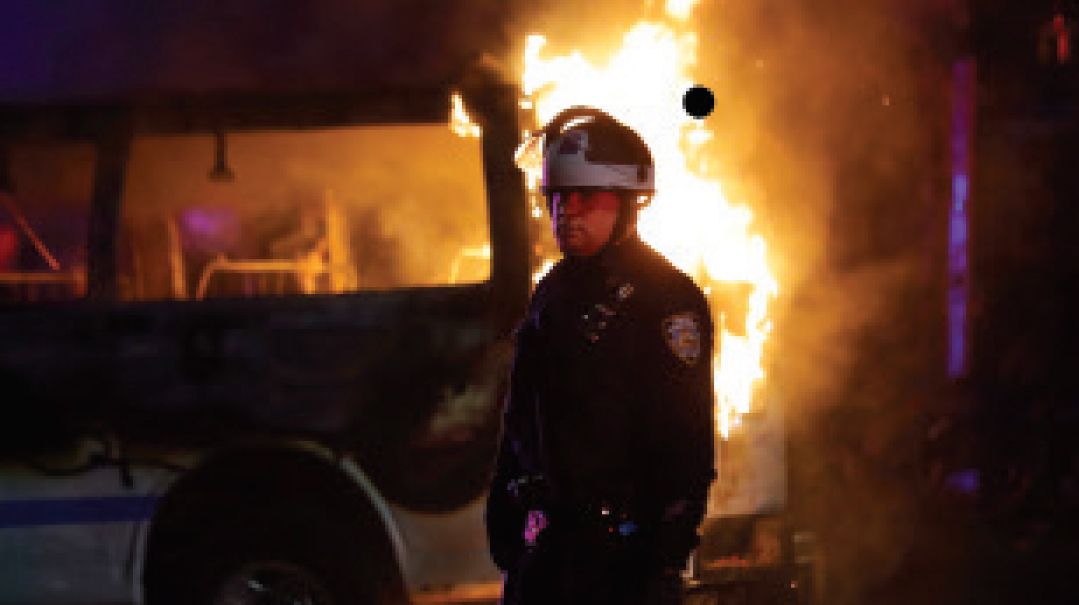
Photos: AP images
With reporting by Yochonon Donn and Omri Nahmias
An unemployed restaurant worker enters a corner shop in Minneapolis and buys a pack of cigarettes with a counterfeit $20 bill. The man, 46-year-old George Floyd, was fired from his restaurant job weeks prior when the coronavirus pandemic struck.
Employees call police, and when they arrive, they pull Floyd out of his car. At first, he is questioned on the sidewalk, but when police officers try to put him in the back of the squad car, he protests, claiming he is claustrophobic, and falls on the pavement. Police officers — there are four police cars at the scene by this time — succeed in stuffing him in the back seat of the car, but for reasons that are not entirely clear, minutes later he is pulled out and dragged to the ground.
One officer, Derek Chauvin, pins his knee into Floyd’s neck despite the suspect being handcuffed from behind and the presence of three other police officers. A heartrending video of the arrest shows Floyd pleading for help, calling for “Mama” and telling the officers that he can’t breathe. Chauvin keeps his knee on Floyd’s neck for almost nine minutes. For three of those minutes Floyd is unconscious.
He dies on the way to the hospital — a combination of an underlying heart condition and “any potential intoxicants in his system,” the county coroner determined — and Minneapolis explodes into violence. The four officers at the scene of the arrest are fired, and Chauvin is charged with third-degree murder and second-degree manslaughter.
What began as a heartbreaking tale of police negligence, and the tragic death of a man who was trying to rebuild his life, morphs into nationwide rioting. “Black Lives Matter,” the protesters call out. “I can’t breathe,” they chant. Whatever the deficiencies of the movement (anti-Semitism has been present at some of the protests in the past), people are angry. Too many black men die at the hands of white police officers, they cry. The system is unfair, they say. We need change now, they demand.
The truth is that Floyd’s death came at a time of record unemployment, a worldwide pandemic in which people have been cloistered in their homes for weeks, and a roiling undercurrent of dissatisfaction with the political class. It is a combustible mix that has caught flame across the country, leading to protests and rioting in large cities like New York and Los Angeles, and smaller ones like Nashville and Cleveland. At press time, more than 4,000 people have been arrested, and state governors have called on thousands of National Guard troops to patrol the streets.
In the nation’s capital, looters have attacked stores, shattering storefronts and setting them aflame. Mobs of young men have rushed in, emptying stores within minutes. A large Apple store located directly across the street from the city’s modern convention center, and the site of the annual AIPAC conference, was emptied by pillagers. (AIPAC announced recently that it is canceling its 2021 policy conference amid uncertainty over the direction of the pandemic.)
While President Trump has called for tough measures to quell the violence, presumptive Democratic nominee Joe Biden has tried to walk between the raindrops. On the one hand he urged calm and an end to the destruction, but he also defended the rights of rioters, calling their response “utterly American.” But if the protests don’t die out soon, Trump will no doubt try to goad him into choosing a side.
The protesters are black and white, mostly young, and very angry. The anarchist movement Antifa has latched on to the movement, encouraging rioting and the destruction of state property. In New York, police squad cars were set aflame. In Washington, D.C., police fired tear gas and stun grenades at protesters steps away from the White House. In Miami, looters tagged walls with a message: “System Broken.”
That seems to be the message right now. Despite a roaring economy only months ago, COVID-19 has seriously upset the country’s balance. People are on edge, angry, scared, and ready to lash out. An unpopular president who tweets incendiary messages criticizing the protesters has only fanned the flames.
In New York City, large Jewish neighborhoods have been unaffected so far. A group of hundreds of protesters chanting anti-police slogans crossed the Williamsburg Bridge and appeared headed to the Satmar stronghold, but they veered off to the trendy north side of the neighborhood instead, New York Police Department liaison Abraham Rosenberg reported.
Yanky Itzkowitz, the coordinator of the Williamsburg Shomrim, said police informed the group that protesters from Manhattan were marching to the area. But when police blocked off the Williamsburg Bridge, the demonstrators took a different route. The noisy group of about 700 at first headed north to the non-Jewish area, but then a smaller group made a U-turn and came through Bedford Avenue, the center of Jewish Williamsburg.
“They passed by very orderly, they just chanted a little bit,” Itzkowitz said.
Rosenberg added that they appeared to be lost. “I’m hearing that they’re not locals, and they don’t know the area,” he said.
The neighborhood had prepared for looting. An Apple store in Williamsburg, whose entire exterior is made of glass, was entirely boarded up. In the end, all the planning was unnecessary.
To the south, Boro Park is nowhere near the most volatile areas, and while Flatbush abuts the African American strongholds of East Flatbush and Brownsville, there has been no trouble so far. Even during the 2014 race turmoil sparked by the police shooting of Michael Brown in Ferguson, Missouri, Flatbush was largely unaffected.
In Crown Heights, which has experienced racial tensions for decades and anti-Semitic attacks on Jews by black youth more recently, it is quiet, according to Chanina Sperlin, the executive vice president of governmental affairs at Crown Heights Jewish Community Council.
“Around Crown Heights it’s a little noisy,” she said. “But that’s out of the Yiddishe neighborhood.”
In Minneapolis, which has a small Orthodox community centered in the suburb of St. Louis Park, all was quiet over Shavuos and Shabbos, according to Joshua Borenstein, executive director of the Torah Academy, an elementary school.
“It didn’t have a major effect on our Yom Tov, and we are very thankful,” he said. “We were in touch with our local police department and made sure to have a security presence here overnight, both Thursday night, Friday night, and Motzaei Shabbos because it seemed like things were starting to get out of control. We wanted to make sure there was someone watching the shuls and the buildings.”
Borenstein describes Minneapolis as a “very get-along kind of place” without serious racial strife. But there is a long record of tension between the police department, which is predominantly white, and the city’s black residents, who make up about 20 percent of the city’s population. The city’s current police chief, an African-American named Medaria Arradondo, sued the city early in his career for racist conduct. Residents of the city have long accused police officers of abuse and the use of excessive force during arrests. The officer at the center of the Floyd arrest, Derek Chauvin, had 17 reports filed against him.
Arradondo vowed to reform the department, and a number of police officers have been dismissed for their prior conduct. But this latest death shows that tensions and issues remain.
“It seems to most people that it’s an issue with the Minneapolis police department as opposed to a racism issue,” Borenstein said, “but when it’s a white officer that killed a black person for what appeared to be no reason, that’s going to flare up all those feelings.”
Borenstein added that children in the Orthodox community have largely been homeschooled for the past three months and are now frightened by what they’re seeing and hearing in the news.
“But we’re going to get through it,” he said. “We explained to them that there are bad people out there who, as soon as there’s a good excuse, act badly.”
The protests raging throughout the city came just as the community entered their shuls for the first time in months. Minnesota governor Tim Walz has imposed an 8 p.m. curfew on Minneapolis and the surrounding areas.
“We told everyone that no one should go out after eight due to the curfew,” Borenstein said. “During the day it’s fine.”
But at night, the fires burn.
(Originally featured in Mishpacha, Issue 813)
Oops! We could not locate your form.





